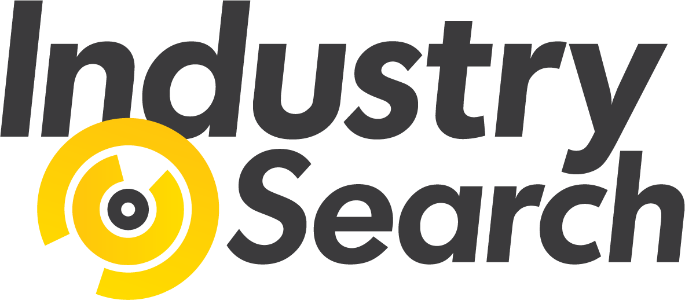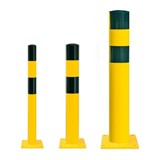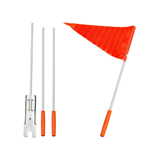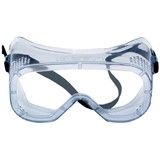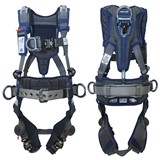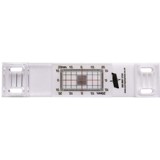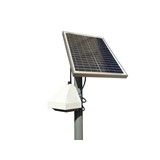Key takeaways
- AI is reshaping industrial safety across sectors like mining, construction, forestry, and manufacturing, boosting hazard detection, predictive maintenance, and emergency responsiveness.
- Compliance and governance matter: Australia’s Voluntary AI Safety Standard (10 guardrails) and ongoing discussions about mandatory AI rules are critical for safe deployment.
- Trust and adoption challenge: Australians show some of the lowest trust in AI worldwide, with only ~30 % seeing more benefits than risks, underscoring the need for transparency and workforce engagement.
- Real-world successes:
- Forestry firm Forico uses AI-powered bushfire cameras, protecting over 2 million hectares with early detection and triangulation.
- Visionify’s AI safety platform across industrial sites elevated PPE compliance from 71 % to 92 %, reduced violations by 68 %, and delivered 210 % ROI within one year.
- Key enablers: Edge computing, ruggedised hardware (e.g. drones), high-definition cameras, integrated dashboards, and human oversight create reliable, scalable AI safety systems.
Introduction
In today’s Australia, industrial safety is more vital than ever. From mining pits in Western Australia to forestry plantations in Tasmania, our high-risk environments demand smarter, faster, and more reliable safety solutions. Artificial intelligence (AI) is stepping into that role, delivering real-time insights, predictive awareness, and even autonomous hazard detection.
But implementing AI isn’t just about tech innovation. You must navigate compliance frameworks, address workforce trust, and deploy systems suited to remote, rugged, or resource-constrained Australian sites. This article guides you through the decision-making journey, from emerging applications and governance to funding, trust, and practical rollout.
Understanding real-time hazard detection and predictive systems
Key technologies
- Computer vision & AI cameras: These systems monitor safety compliance, like PPE use or restricted zone breaches, triggering real-time alerts when violations occur.
- Predictive analytics & sensor integration: AI models flag fatigue, equipment failure, or environmental threats before they escalate. Monitoring vital signs or machinery anomalies helps you act proactively rather than reactively.
- Drones & edge-AI platforms: Equipped with LiDAR, thermal cameras, or magnetometers, drones can inspect hazardous sites, like post-blast mine zones, without endangering personnel. High reliability comes from edge processing, BVLOS-capable connectivity, and rugged hardware built for harsh environments.
An Australian example: Forico’s bushfire detection
Forico deployed four AI-powered cameras in northwest Tasmania to detect bushfires early. The system uses triangulation for precise fire location, a boon for regional safety and environmental protection.
Why this matters: In remote areas with high fire risk, quick detection can prevent major loss of life, timber, and infrastructure. It also demonstrates how AI systems can scale regionally with public and private collaboration.
Regulatory and governance landscape in Australia
Voluntary guardrails and roadmap to regulation
- In September 2024, Australia rolled out a Voluntary AI Safety Standard featuring ten guardrails, including governance, risk management, transparency, human oversight, and supply-chain accountability.
- The government continues consultations toward mandatory AI rules for high-risk settings, focusing on oversight and transparency.
Shifting expectations for industrial adopters
For business leaders like you, it’s vital to design AI implementations aligned with these guardrails, especially governance, human-in-the-loop, auditability, and stakeholder transparency.
Tackling trust, workforce readiness, and acceptance
- Australians are notably skeptical of AI, with only 30 % believing its benefits outweigh the risks and a mere 24 % having had any AI-specific training.
- Despite widespread use, two-thirds of employees report employer AI adoption, poor AI literacy and lack of policy framework foster misuse and mistrust.
Practical strategies you can apply:
- Human-centred deployment: Keep AI as augmentation, not authoritarian.
- Transparent operations: Clearly communicate what data is collected, how it is used, and who sees it.
- Workforce training: Build literacy so employees understand and trust AI tools.
- Consultative rollout: Engage unions or worker representatives early, especially in mining or construction, to shape responsible AI use.
Industries where AI safety delivers the biggest impact
AI adoption in Australia is strongest in sectors where risks are high, operations are complex, and compliance costs are significant. These industries see the fastest return on investment.
Mining and resources
- Collision avoidance: Cameras tracking vehicles and workers.
- Fatigue monitoring: Wearables and in-cab cameras detect drowsiness.
- Post-blast drone inspections: Map pits without putting humans at risk.
Why it matters: Mining accounts for 1 in 8 workplace fatalities, despite less than 2 % of the workforce (Safe Work Australia, 2023). AI can dramatically reduce this risk.
Construction and infrastructure
- PPE compliance: Cameras flag missing helmets, vests, or harnesses.
- Site access control: AI verifies authorised personnel.
- Structural checks: Drones detect cracks or scaffold shifts.
Why it matters: Construction had 24 fatalities in 2022–23. AI reduces human error and compliance oversights.
Forestry and agriculture
- Bushfire detection: AI cameras triangulate fire outbreaks in minutes.
- Machinery safety: Sensors prevent rollovers and detect faults.
- Livestock monitoring: Drones track herd movement and worker activity.
Why it matters: Remote sites can delay emergency responses, AI provides instant alerts.
Manufacturing and logistics
- Machine guarding: Vision systems prevent unsafe interaction with robots or conveyors.
- Environmental monitoring: AI detects poor air quality, overheating, or gas leaks.
- Forklift collision prevention: Cameras alert staff to nearby pedestrians.
Why it matters: Warehousing and logistics rank among the highest serious injury claim rates in Australia.
Oil, gas, and energy
- Leak detection: Thermal imaging spots invisible gas leaks.
- Pipeline inspection: AI drones monitor remote infrastructure.
- Worker health monitoring: Wearables track heat stress and exposure risks.
Why it matters: Even a single incident can be catastrophic, AI ensures predictive safety monitoring.
Implementing large-scale AI safety platforms: A case study
Consider Visionify’s case study as a model for multi-site rollout:
Challenges addressed:
- Limited visibility across facilities
- Delayed incident detection
- Regulatory pressure for better reporting and compliance
Execution blueprint:
- Discovery & planning (2 weeks): Hazard mapping, stakeholder alignment, and KPIs
- Deployment (4 weeks): Phased camera and edge device installation, integrated into current safety systems
- Unified dashboard featuring live alerts, heatmaps, visual site maps, and compliance analytics
Impressive outcomes (within 3 months):
- PPE compliance up from 71 % to 92 %
- Safety violations dropped by 68 %
- OSHA-reportable incidents cut by 45 %
- 210 % ROI and payback in under 3 months
- 31 % cut in insurance premiums
Legal and compliance nuances
When it comes to AI in industrial safety, compliance isn’t optional, it’s critical. Australian workplaces must navigate multiple layers of regulation to ensure AI systems are both safe and legally sound.
Key frameworks and requirements include:
- Voluntary AI Safety Standard (VAISS): Outlines ten guardrails covering governance, risk management, human oversight, and transparency. AI deployments in high-risk industrial settings should align with these principles to pre-empt future mandatory regulations.
- Safe Work Australia obligations: AI systems must integrate with existing WHS duties, ensuring hazard identification, incident reporting, and worker safety responsibilities are maintained. Non-compliance can trigger enforcement action, fines, or work stoppages.
- Privacy and surveillance laws: Systems that collect video, biometric, or location data must comply with the Privacy Act 1988, as well as state-specific surveillance legislation (e.g., Victoria, NSW). Transparent communication with staff about data use is essential.
Why it matters for you: Misaligned AI systems aren’t just a legal risk, they can undermine worker trust, attract public scrutiny, and compromise your safety outcomes. Early alignment with governance frameworks protects your workforce, your reputation, and your bottom line.
Buying criteria and practical considerations in the Australian context
Key factors when evaluating AI safety solutions:
- Integration capability: Must work with legacy systems, SCADA, or site-specific networks.
- Edge computing: Essential for remote areas or low bandwidth conditions.
- Hardware ruggedness: Look for weather-, dust-, vibration-resistant drones/cameras.
- Scalability: Configure for one site or 20, without reinventing deployment.
- Analytics & reporting: Prefer systems offering predictive modeling and trending.
- Governance compliance: Ensure alignment with VAISS guardrails and future laws.
- Human interface: Dashboards, mobile apps, and alerts should be intuitive and actionable.
- Change management: Plan for training, communication, recognition programs, and stakeholder buy-in.
Planning ahead: Emerging trends and strategic outlook
- Augmented reality (AR) & wearables: Expect expanded use of wearables to monitor fatigue, posture, or location, AND AR for maintenance guidance.
- Autonomous safety: Cobots and autonomous drones or vehicles handling dangerous tasks will reduce risk exposure further.
- AI governance maturity: As VAISS evolves and mandatory regulation dawns, you’ll need frameworks and evidence of compliance baked into your deployments.
Cross-industry collaboration: Government bodies like the National AI Centre (NAIC) drive trusted AI adoption. - Product innovation: Companies like SafetyCulture, valued at $2.5 billion, are adding AI-based inspection, training, and compliance tools.
Summary: A safer, smarter industrial future for Australia
Australia’s industrial sectors face growing pressure for safer, more sustainable operations amid complex environmental and regulatory landscapes. AI offers a powerful toolkit, from real-time hazard detection and predictive analytics to governance-aligned, scalable platforms.
To lead effectively, you’ll need to:
- Understand real-world AI systems and their operational value
- Prioritise trust, transparency, and worker engagement
- Design systems with governance built-in and agility to scale
- Watch for emerging tech and be ready to evolve
By doing so, you’ll help create safer worksites, stronger compliance, and a future where smart monitoring isn’t just a luxury, it’s the new standard across Australian industry.
